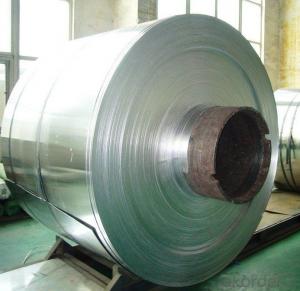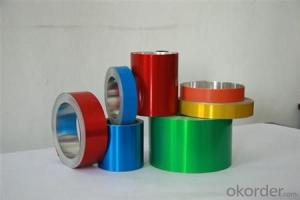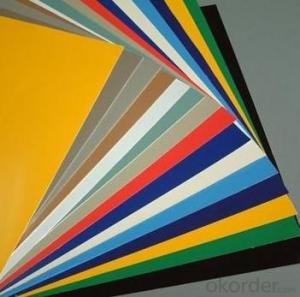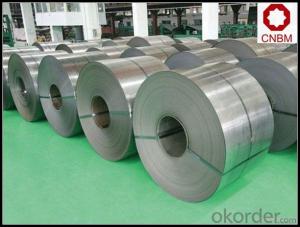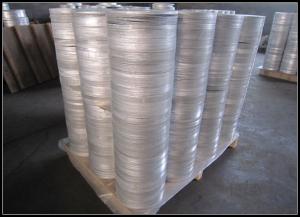Painted Aluminum Coil Stock - Customized 5052 H36 Wide Aluminum Coil of Good Quality
- Loading Port:
- Shanghai
- Payment Terms:
- TT OR LC
- Min Order Qty:
- 5 m.t.
- Supply Capability:
- 5000 m.t./month
OKorder Service Pledge
OKorder Financial Service
You Might Also Like
Customized 5052 H36 Wide Aluminum Coil of Good Quality
Aluminum coil is a kind of metal product. Rolled through by casting machine and processed by pull corner machine, aluminum coil is ready for the conduct of the shears. It is widely used in manufacturing aluminum thin sheet and aluminum foil. Aluminum coil is suitable for further machining with original standard quality. It is easy to controll and manufacture according to each customer's requirements.
5000 series aluminum alloys are more commonly used aluminum series, the main elements of magnesium, magnesium content between 3-5%. Also it can be called aluminum-magnesium alloy.
Aluminum Coil Specification:

l Packaging&Shipping
Packaging detail: Standard seaworthy exporting carton, wooden pallets, waterproof paper and plastic coverage or as customer's requirements.
Delivery detail: About 25 days from received original L/C or advance payment.


l Features
1. Name: Customized 5052 H36 Wide Aluminum Coil of Good Quality
2. Temper: O, F, HXX
3. Thickness: 3.0-10.0mm
4. Width: 1000-1500mm
5. Type: Coil/Roll
6. Surface Treatment: Mill finished
7. Application: Decoration, packaging, printing, covering
8. Standard size: Upon customer's demand
9. Quantity: 18tons(±10%)in one 20 feet container
l Company Profile
CNBM International Corporation, China National Building Materials (Group) Corporation, is one of the largest companies in China building material & equipment industry, with 42800 employees and sales in 2005 of US Dollar 4.395 billion.
The Aluminum Product Department of CNBM manufactures and sells aluminum products including aluminum coils, aluminum foils, aluminum sheets, aluminum circles etc. With strong technical strength and strong ability to innovate, CNBM aluminum coils are being sold to many countries in around the world.
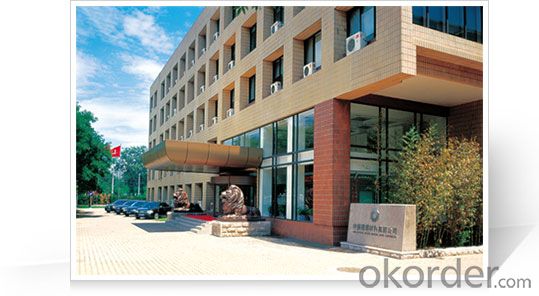
l CNBM World Wide
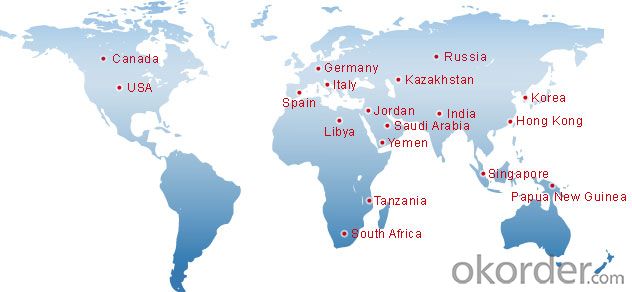
l Products images
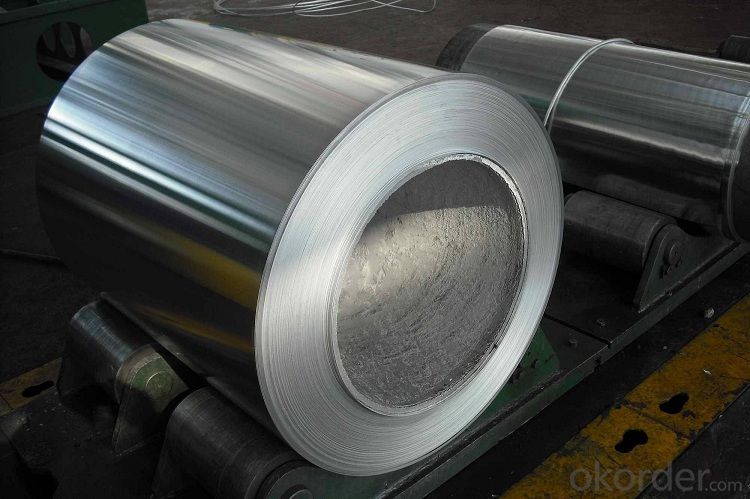
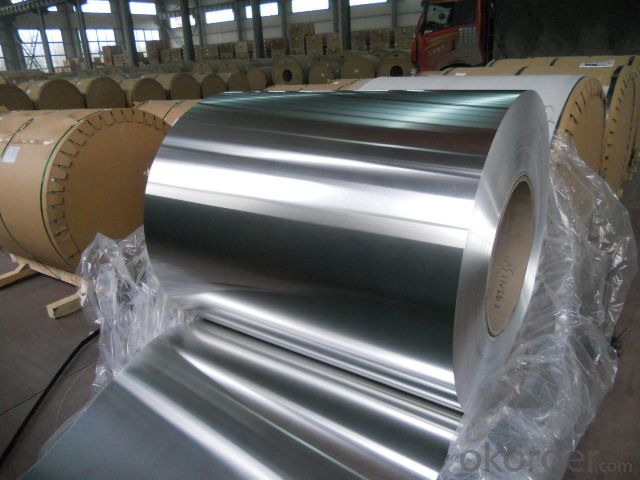
l FAQ
Q: Do you provide free samples?
A: Yes, free aluminum coil samples will be sent to you on freight at destination.
Q: Can I get your latest products catalogue?
A: Yes, it will be sent to you in no time.
Q: What is the MOQ?
A: 5 tons
Q: What are your payment terms?
A: We accept L/C, T/T.
Fore more information about aluminum coil or other aluminum products, please contact service@okorder.com
- Q: What are the potential applications of coil-anodized aluminum coils?
- Coil-anodized aluminum coils possess unique properties and advantages, allowing them to be employed in a wide range of potential applications. Here are some of the primary areas where they can be utilized: 1. Architectural: The distinct properties of coil-anodized aluminum make it well-suited for architectural purposes, including cladding, roofing, and facades. With its anodized coating, it offers increased durability, resistance to weather conditions, and color stability, making it suitable for outdoor use in various climates. Furthermore, the coils can be shaped and formed to create different architectural elements, providing design flexibility. 2. Transportation: Due to its lightweight nature, coil-anodized aluminum is ideal for transportation applications. It can be employed in the manufacturing of parts and components for the automotive, aerospace, and marine industries. The anodized coating enhances its corrosion resistance, making it suitable for exterior components and structures. 3. Electronics: Coil-anodized aluminum coils find utility in the field of electronics manufacturing. The anodized coating provides excellent electrical insulation, which is crucial in applications necessitating high conductivity and insulation. It can be utilized in the production of components such as heat sinks, casings, and connectors. 4. Signage and displays: The vibrant and long-lasting colors achieved through coil-anodizing make it a perfect material for signage and displays. The anodized coating ensures color stability against UV radiation and harsh weather conditions, rendering it suitable for both indoor and outdoor applications. It enables the creation of eye-catching and durable signage and displays. 5. Furniture and interior design: Coil-anodized aluminum coils can be employed in the manufacture of furniture and interior design elements. The anodized coating provides a smooth, durable, and scratch-resistant surface, making it suitable for applications like tables, chairs, wall panels, and decorative elements. The wide range of available colors and finishes allows for versatile design possibilities. 6. Industrial applications: Coil-anodized aluminum coils can be utilized in diverse industrial sectors. The anodized coating offers enhanced corrosion resistance, which is advantageous in industries such as chemical processing, food processing, and pharmaceuticals. It can be used in the production of tanks, containers, and equipment that require resistance against harsh chemicals and environments. 7. Energy and sustainable applications: The lightweight nature and durability of coil-anodized aluminum make it suitable for energy and sustainable applications. It can be employed in the manufacturing of solar panels, heat exchangers, and other energy-related components. The anodized coating provides protection against weathering and corrosion, ensuring long-term performance. In conclusion, coil-anodized aluminum coils have extensive and diverse potential applications, spanning across architectural, transportation, electronics, signage, furniture, industrial, and energy sectors. The combination of its lightweight nature, durability, color stability, and corrosion resistance makes it a versatile material for various industries and applications.
- Q: What is the difference between pre-painted and natural aluminum coils?
- There are two types of aluminum coils used in various industries: pre-painted and natural. The surface finish is the main distinguishing factor between these two types. Pre-painted aluminum coils are coated with paint or a protective coating before delivery. This coating is applied in a controlled environment, ensuring a uniform and durable finish. The advantages of pre-painted coils include increased resistance to corrosion, improved appearance, and better ability to withstand weather conditions. They also offer a wide range of color options, which makes them suitable for architectural applications where color matching is important. On the other hand, natural aluminum coils remain untreated and maintain their original metallic appearance. These coils are commonly used in applications where the natural aluminum finish is desired, such as in the production of consumer electronics, automotive parts, and other industrial products. Natural aluminum coils are known for their excellent thermal conductivity, lightweight nature, and high strength-to-weight ratio. In conclusion, the difference between pre-painted and natural aluminum coils lies in their surface finish. Pre-painted coils have a protective layer of paint, providing improved resistance to corrosion, better appearance, and color choices. Natural aluminum coils, on the other hand, retain their original metallic appearance and are often preferred in applications where the natural aluminum finish is desired.
- Q: high-quality hi-fi power and amplifiers generate large amounts of heat. to dissipate the heat and prevent damage to the electronic components, heat-radiating metal fins are used. would it be better to make these fins out of iron or aluminum? specific heat capacities for aluminum and iron are 0.89 J/degrees C.g and 0.45 J/degrees C.g, respectively. explain your answer
- Look up heat sinks and find one made of iron. You won't. They are always made of aluminum.
- Q: How do aluminum coils contribute to fire safety?
- Fire safety is greatly enhanced by the presence of aluminum coils. Primarily, aluminum is a material that does not burn or support combustion, making it an ideal choice for industries where fire safety is of utmost importance, such as construction. In the manufacturing sector, aluminum coils are commonly utilized to create fire-resistant barriers and protective claddings. These barriers function as a shield, effectively halting the spread of flames and heat across different sections of a building. By containing the fire and preventing its spread, aluminum coils play a pivotal role in limiting the destruction caused by fires and ensuring the safety of individuals. Moreover, aluminum coils are frequently employed in the fabrication of fire-resistant doors, windows, and curtain walls. These components are specifically designed to endure high temperatures and serve as an effective barrier against the propagation of fire and smoke. By utilizing aluminum coils as the fundamental material for these products, they can offer superior fire protection and help prevent the rapid advancement of flames in the event of a fire. Additionally, aluminum possesses excellent thermal conductivity in addition to being non-combustible. This characteristic enables it to swiftly dissipate heat, reducing the risk of ignition and minimizing the potential for fire accidents. Aluminum coils are often incorporated into heat exchange systems, such as HVAC units and refrigeration systems, where their thermal conductivity aids in temperature regulation and prevents overheating, further reducing the risk of fire. In conclusion, aluminum coils make significant contributions to fire safety by virtue of their non-combustible nature, their ability to serve as fire-resistant barriers, and their use in the production of fire-resistant doors and windows. Their capacity to dissipate heat rapidly also plays a crucial role in minimizing the risk of fire accidents. By employing aluminum coils in various fire safety applications, we can enhance the protection of buildings and ensure the safety of individuals in the event of a fire.
- Q: What are the methods to prevent rust formation on steel coils during storage and transportation?
- <p>To prevent rust on steel coils during storage and transportation, follow these steps: 1. Keep the coils dry and avoid exposure to moisture. 2. Use rust inhibitors or anti-corrosion coatings on the coils. 3. Store the coils in a clean, dry, and well-ventilated area. 4. Use protective wrapping materials like plastic film or corrosion-resistant paper. 5. Ensure proper stacking and avoid direct contact between coils. 6. Use rust-resistant materials for transportation containers. 7. Regularly inspect the coils for signs of rust and address any issues promptly. By implementing these measures, you can significantly reduce the risk of rust formation on steel coils.</p>
- Q: What are the insulation options available for aluminum coils?
- There are various insulation options available for aluminum coils, including fiberglass insulation, foam insulation, and elastomeric insulation. These insulation materials help to improve the energy efficiency of the coils and prevent condensation or heat loss.
- Q: What are the different alloy compositions used in aluminum coils?
- There are several different alloy compositions used in aluminum coils, including 1xxx series (pure aluminum), 3xxx series (aluminum-manganese), 5xxx series (aluminum-magnesium), and 8xxx series (aluminum-lithium). Each alloy composition offers unique properties and characteristics, making them suitable for various applications in industries such as automotive, construction, and aerospace.
- Q: Are aluminum coils resistant to saltwater corrosion?
- Yes, aluminum coils are generally resistant to saltwater corrosion. Aluminum is known for its excellent corrosion resistance, especially in marine environments where saltwater exposure is common. The naturally forming oxide layer on the surface of aluminum provides a protective barrier against saltwater corrosion. This oxide layer acts as a shield, preventing direct contact between the aluminum and the corrosive saltwater. Additionally, aluminum coils can be further protected through various coating methods, such as anodizing or painting, which enhance their resistance to saltwater corrosion even further. However, it is important to note that prolonged or continuous exposure to saltwater can gradually degrade the protective oxide layer and may eventually lead to corrosion, although this process is typically slow. Regular maintenance and proper care can help extend the lifespan and performance of aluminum coils in saltwater environments.
- Q: Are aluminum coils suitable for electrical transformers?
- Yes, aluminum coils are suitable for electrical transformers. Aluminum is a lightweight and cost-effective material that offers several advantages for transformer construction. It has excellent electrical conductivity, comparable to copper, which allows for efficient power transfer. Additionally, aluminum coils have lower resistance than copper coils, resulting in reduced power losses and improved energy efficiency. The use of aluminum coils in transformers also contributes to weight reduction, making them easier to handle and transport. However, aluminum coils require larger cross-sections compared to copper coils due to their slightly lower conductivity. This means that transformers using aluminum coils may be slightly larger in size. Overall, aluminum coils are a viable and widely used alternative to copper coils in electrical transformers, offering cost savings, high conductivity, and improved energy efficiency.
- Q: Can aluminum coils be used for food storage containers?
- Yes, aluminum coils can be used for food storage containers. Aluminum is a safe and commonly used material for food packaging due to its non-toxic, lightweight, and corrosion-resistant properties. It helps to preserve the freshness, flavor, and quality of food while also being recyclable and environmentally friendly.
Send your message to us
Painted Aluminum Coil Stock - Customized 5052 H36 Wide Aluminum Coil of Good Quality
- Loading Port:
- Shanghai
- Payment Terms:
- TT OR LC
- Min Order Qty:
- 5 m.t.
- Supply Capability:
- 5000 m.t./month
OKorder Service Pledge
OKorder Financial Service
Similar products
Hot products
Hot Searches
Related keywords
